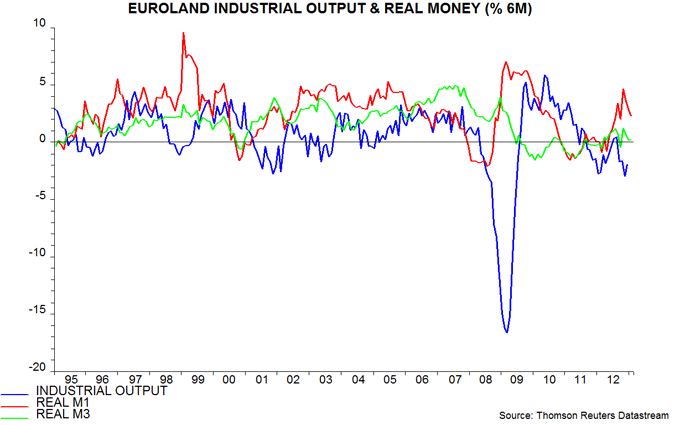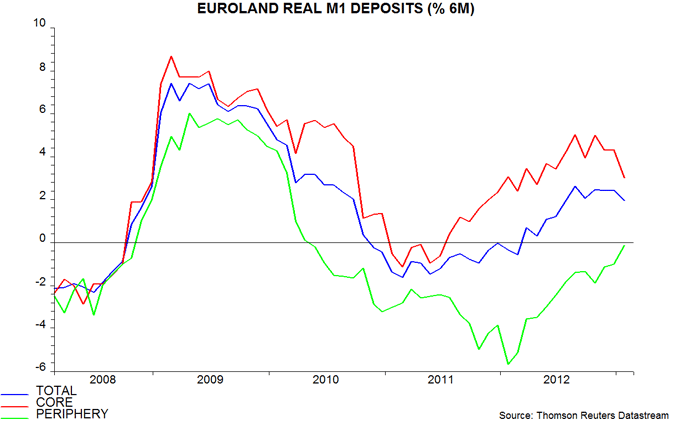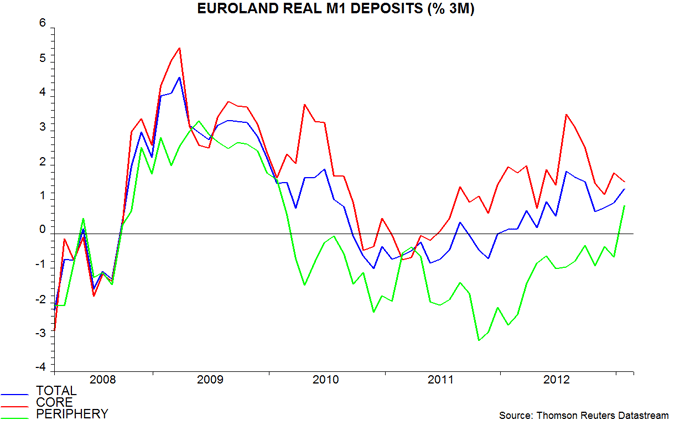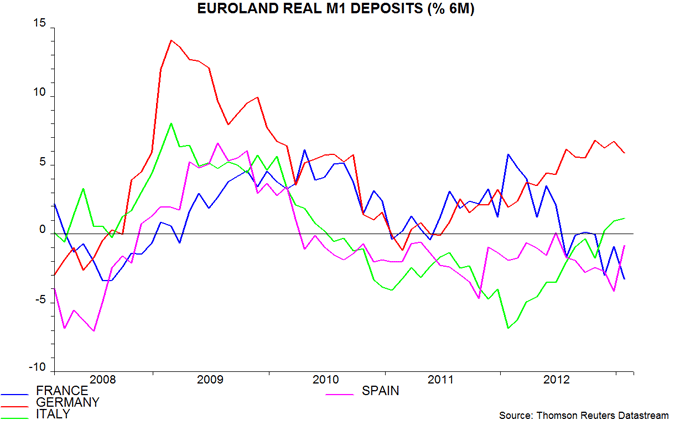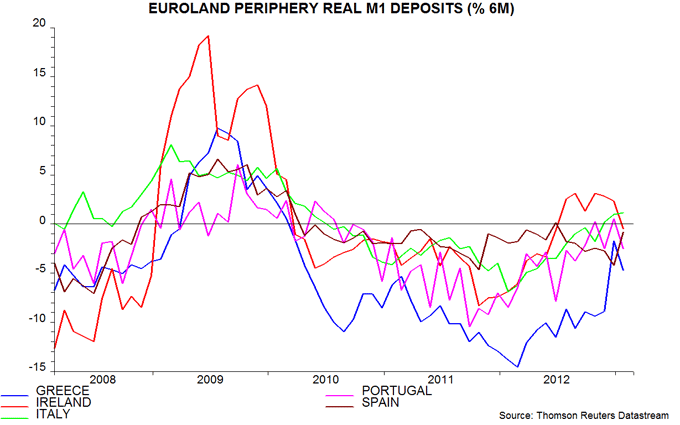Eurozone monetary trends remain consistent with economic improvement but real M1 expansion has fallen back, suggesting that growth will be insufficient to prevent a further rise in unemployment. French M1 contraction, moreover, has accelerated – a deepening recession in that country could be the next focus of regional strains.
Six-month growth in eurozone real M1 was 2.3% (not annualised) in January, down from an October peak of 4.7% but still consistent with moderate economic expansion – see first chart. Real M3 growth was weaker at 0.2% but is less useful for forecasting the economy. Both measures were contracting a year ago, correctly signalling a recession.
Encouragingly, M1 divergence between the core and periphery continues to narrow. The six-month fall in combined real M1 deposits in Greece, Ireland, Italy, Portugal and Spain slowed to 0.1% in January, the smallest since April 2010 – second chart. In the last three months, peripheral real deposits rose by 0.8% versus a 1.5% increase in the core – third chart.
In the big four economies, real M1 deposits grew strongly in Germany and modestly in Italy in the six months to January – fourth chart. Spanish contraction slowed last month and the main focus of concern is now France – the six-month fall accelerated to 3.3% versus a maximum decline of 3.4% before the 2008-09 slump. Other notable recent developments include a sharp slowdown in Belgium and the Netherlands and renewed Irish weakness.
